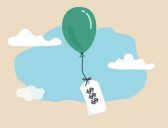There tends to be an involuntary cringe when we think of debt, but the truth is that not all debt is bad for you. Part of your personal financial responsibility is knowing what is unsecured debt and what is secured debt, the difference between these two debts and when they’re applicable. With this understanding comes better personal financial decisions and a more secure future.
What is unsecured debt?
Unsecured debt is a common form of debt that has no collateral backing it. This means that if you default on those debt payments, then the lender has no property to seize to recoup its losses. With unsecured debt, however, you are subject to higher interest rates on personal loans because of the lack of collateral.
Forms of unsecured debt include credit cards, student loans, medical loans and personal loans. There may be times when you need more money than you have, like an unexpected medical bill or a last-minute flight for a funeral. A credit card or quick personal loan will give you the funds you need without delay. Personal loans and credit cards are both examples of unsecured debt — if you stop paying your credit card bill, there’s no property that you agreed the credit card issuer could seize in that instance.
Other forms of unsecured debt can include utility bills, lawyer’s fees or taxes, the costs of which can easily negatively affect your credit.
What is secured debt?
Secured debt is debt that is backed by property, like a car or a house. Should you default on the repayment of the loan or debt, the creditor can take the collateral instead of opening a debt collection on your record or suing you for payments.
With secured debt, you often benefit from better interest rates because even if you stop making payments, the lender can seize the property, sell it and then regain its losses. Creditors are more flexible with terms because the loan is guaranteed by the collateral and with less risk to the bank.
Two types of secured debt: consensual and non-consensual liens.
Consensual loans are the most common type of secured debt, wherein you as a borrower agree to put up your property as collateral.
But there are many types of non-consensual loans, too. Non-consensual debts include a money judgment that a creditor files against you, or a tax lien placed against your property because you did not pay your federal, state or local taxes.
Unsecured debt vs. secured debt
While secured debt uses property as collateral to support the loan, unsecured debt has no collateral attached to it. However, because of collateral connected to secured debt, the interest rates tend to be lower, loan limits higher and repayment terms longer. In the case of a home loan, APRs hover between 3% and 4% with repayment terms of up to 30 years. Because this is a secured debt backed by the house as collateral, borrowers with good credit histories enjoy better rates and terms.
On the other hand, unsecured debt — like credit cards and personal loans — tend to be associated with higher interest rates and lower terms. Especially for borrowers who have limited credit history or bad credit, these rates and terms can be even more restricting.
Secured debt can be a better option for people with poor credit history or those with no credit history at all. It’s also a fantastic tool if you experienced a financial hardship and are looking for ways to rebuild your credit. Responsible use of a secured loan can improve your credit score, so you are eligible for favorable unsecured loans in the future.
Some secured credit cards even offer additional benefits like free identity theft and credit monitoring. If you have a low credit score or are just beginning to build your credit, many banks will offer you a secured credit card with varying interest rates. The card is deposit-based; you pay the bank a total amount that is then placed onto the credit card. You use the card and make payments with interest as usual; if you default on your payments, the bank uses your deposit to settle the debt. This affects your credit score because banks will report the late or missed payments to credit bureaus.
If you believe you are fiscally responsible enough for an unsecured credit card or small personal loan, then they can also be used to rebuild your credit. Just be sure to never borrow more than you could pay back or rack up excessive amounts of credit card debt.
Which type of debt should you prioritize paying off first
When it comes to paying off debt, a good rule of thumb is to prioritize paying off debts and loans by the interest rate. Look at unsecured debt versus secured debt and start with the loans with the highest interest rate first, so you save yourself the extra money in accumulating interest. There is the added benefit of a lower credit utilization ratio, which will help your credit score to increase that much faster. This is known as the snowball effect; as you pay off debts with high interest rates, there becomes more room in your budget to pay off the smaller, lower-interest debts. Soon, you’re debt-free and ready to start over with a clean slate.
Sometimes, bankruptcy can be a good option to resolve your unsecured debt. This erases your legal responsibility to repay your debt, but it will severely impact your credit score and your chances of getting loans in the near future.
Unsecured debt should be a top priority because of the risk to your property. Not only can the government seize your property, but you could still be responsible for additional debts should the repossession fail to cover the full amount of your debt.
The bottom line
When taking out a loan, your credit history will greatly determine whether you will be eligible for secured or unsecured debt. Unsecured loans may not be an option for you if you are just beginning to use your credit or you have a rocky credit history because they are often subject to high interest rates and do not offer longer terms.
Paying off your debts and prioritizing your higher interest loans will help to reduce your credit utilization ratio, thus giving your FICO score a chance to grow. Knowing the difference between secured debt versus unsecured debt can help you achieve financial success that much sooner, along with the added security and benefits that a great credit score offers.
The post What is the difference between secured and unsecured debt? appeared first on Bankrate and is written by Lena Borrelli
Original source: Bankrate






